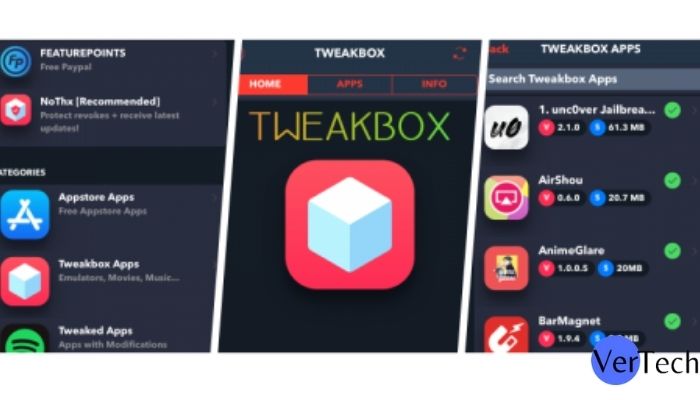Internet
The Potential of Kubernetes for Enterprises

It’s been a few years since Google gave control of Kubernetes, its open-source container management platform, to the Cloud Native Computing Foundation. Since then, Kubernetes has quickly become the leading container management solution on the market.
A market study from last year revealed that 87% of respondents were running applications on Kubernetes, and nearly 90% were running in production.
While Kubernetes has become the de facto standard for orchestrating containerized applications, it is also expanding as developers, vendors, and business users extend the technology to serve other vital functions.
This rapid innovation is one of the main benefits of a thriving open-source ecosystem. A single technology platform that meets a wide range of needs dramatically simplifies IT management.
Here are five great examples of how companies are taking advantage of Kubernetes, giving us a glimpse of how the platform could evolve in the future:
On-premises and cloud use
For some businesses, entrusting sensitive data or IP to a public cloud provider is not an option. Others have the on-premises capacity that they want to continue to leverage.
However, none of that means they can’t use Kubernetes and containerized applications, even though they are more associated with the cloud.
Kubernetes enables IT teams to rapidly build, ship, and scale applications in the public cloud and on-premises environments.
Cloud-native applications better support digital transformation initiatives, and the underlying technologies work just as well in private cloud environments as they do in the public cloud.
Deploy stateful apps as quickly as stateless apps
In the early days, containers were primarily used for stateless applications, where data generated in one session was not carried over to the next.
This was unrealistic for companies that relied heavily on stateful applications for their mission-critical and traditional business needs.
Since then, Kubernetes and the container ecosystem have evolved to deploy stateful applications on various databases and other enterprise infrastructures.
IDC reported, as early as 2018, that 76% of enterprises can now use containers pervasively for mission-critical applications, something previously impossible without support for stateful applications.
Complete control of application lifecycle management
An application’s life cycle depends on its data’s life cycle. How that data is managed from start to finish determines the longevity of an application.
Kubernetes management supports applications and their data. Extensions that have been added for high availability, disaster recovery, backup, and compliance ensure consistent access and pinpoint accuracy.
Using the same technology, Kubernetes, for application deployment and lifecycle management results in greater efficiency.
For example, in banking, your account is traditionally backed up in a machine-centric way; if a backup is retrieved, the entire machine image will be retrieved with the rest of the application information.
With Kubernetes management, a backup request can retrieve data for a specific month, day, or minute, which is much more efficient and requires fewer resources.
A new control plane for infrastructure (in the data center and the cloud)
Kubernetes was born to orchestrate applications in the data center and the cloud but is increasingly used to manage the underlying compute network and storage.
This has been made possible by two specifications from the Cloud Native Computing Foundation: The Container Storage Interface and the Container Network Interface.
These advancements are necessary to keep pace at the infrastructure layer versus container modernization speeds at the application layer. It makes perfect sense for the same technology platform to do both.
A fast enabler for Artificial Intelligence
Kubernetes is Google gave up control of Kubernetes because it can automate the exploration, training, and deployment of new algorithms and applications for AI and Machine Learning.
Kubernetes allows data scientists to work within an isolated environment on different data sets without tying up IT resources or polluting shared spaces.
Once an AI model is built, Kubernetes supports compute-independent scaling as data scientists work to improve accuracy gradually.
When an AI application is ready to be deployed, Kubernetes streamlines the deployment of each application into containers as ‘microservices,’ accelerating launch times and enabling reuse across other applications.
It is impressive to see how Kubernetes has become an essential technology to address critical business IT needs in such a short time, thanks to open source.
The same advantages of speed, flexibility, and scale that containers brought to application development rapidly spread to infrastructure management and beyond.
Having a single technology platform that meets these needs simplifies the management of technology teams and ensures that infrastructure developments can keep pace with rapid changes in the application layer.
You may use Wildcard to build, deploy, and manage applications without writing a single line of code. Start for free by singing using Github or GitLab.
-

 Latest News3 years ago
Latest News3 years agoSoap2day Similar Sites And Alternatives To Watch Free Movies
-

 Software3 years ago
Software3 years agoA Guide For Better Cybersecurity & Data Protection For Your Devices
-

 Android2 years ago
Android2 years agoWhat Is content://com.android.browser.home/ All About? Set Up content com android browser home
-

 Blog2 years ago
Blog2 years agoMyCSULB: Login to CSULB Student and Employee Portal
-

 Android App3 years ago
Android App3 years agoCqatest App What is It
-

 Android App3 years ago
Android App3 years agoWhat is OMACP And How To Remove It? Easy Guide OMACP 2022
-

 Business3 years ago
Business3 years agoKnow Your Business (KYB) Process – Critical Component For Partnerships
-

 iOS2 years ago
iOS2 years agoTweakBox App – Best App for iPhone [Jan, 2023] | (iOS 15, Download, 2023)





